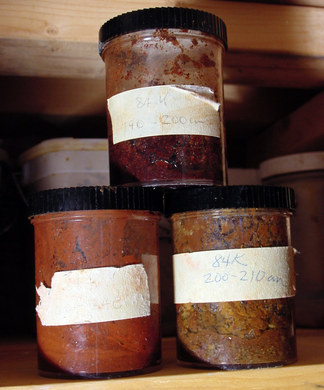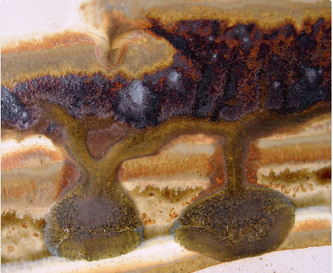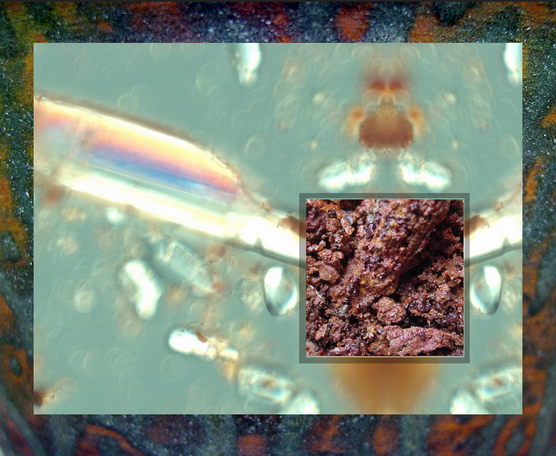Red Sea
Scroll all the way down for more fun.
|
This Red Sea area, so rich with colors from beiges to ochres to iron reds and burnt siennas, made me wonder, why is it so hot down there? Why is the mud so crystalline and sticky? Why does it smell like iodine?
The Woods Hole Oceanographic Institute gave me jars that were badly marked and useless to scientists, from a cruise that provoked plenty of questions from scientists because they discovered water temperatures of 56°C (133°F ). Equatorial sun? Hydrothermal vents? Find an interesting article at WHOI’s Dive and Discover on-line archive. |
Amy Bower gave me a different sample from years later, along with these maps:
Rainbow crystal is the same Red Sea sediment shown above, here seen through a microscope by cell biologist Nina Stromgren Allen (at her play).
|



